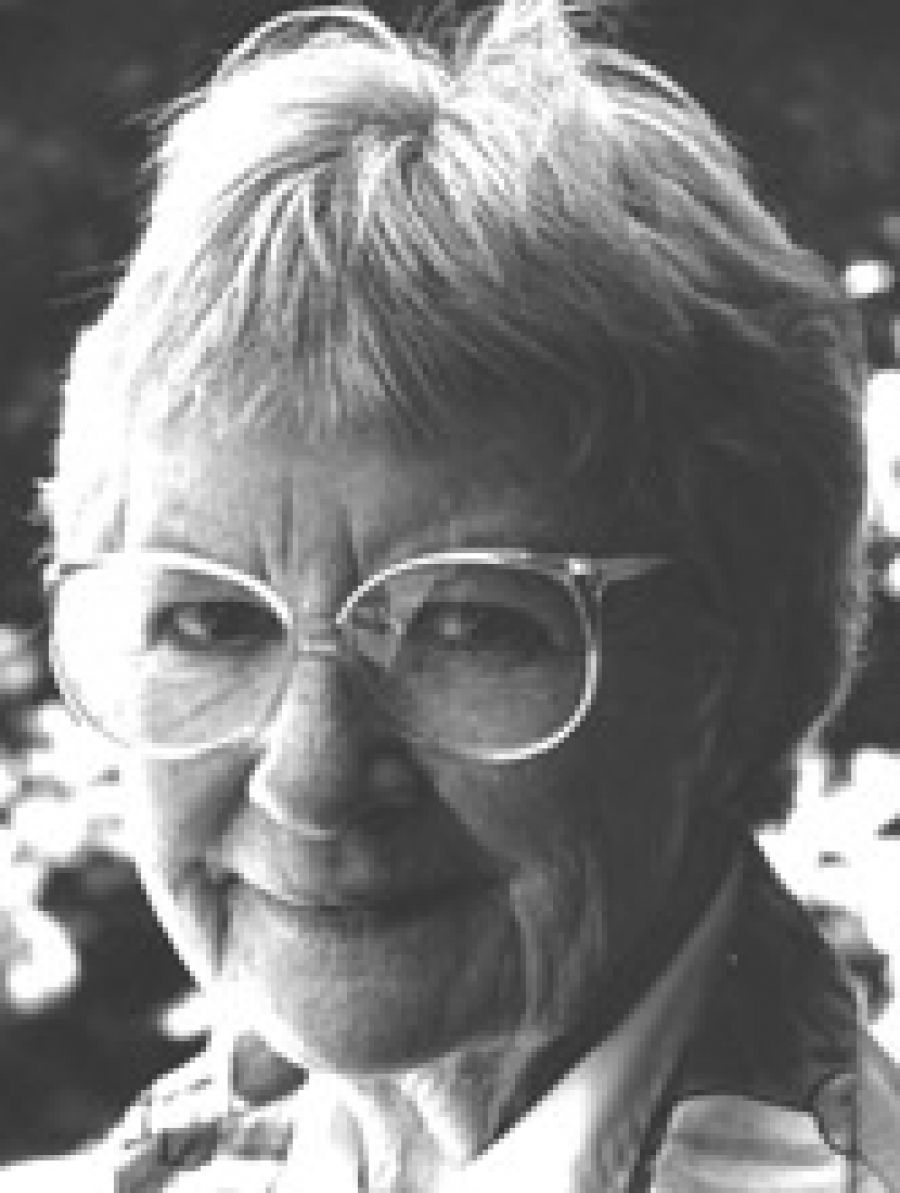
- Free Article: No
- Contents Category: Poetry
- Review Article: Yes
- Online Only: No
- Custom Highlight Text:
How good to receive Gwen Harwood’s latest book of poems, The Lion’s Bride! Though Harwood seems to be continually active making words for music for Australian composers, a five to seven year interval lies between the appearance of each volume of poems –·here I include the 1975 Selected Poems because it gave us twenty-seven New Poems, including many that caught the imagination of readers and are already well-known: ‘The Blue Pagoda’, ‘At Mornington’, ‘Father and Child’. Selected Poems also included the tragic sonnet ‘Oyster Cove’, which, though we could not know, anticipated courageous series in The Lion’s Bride which mourns and confronts the guilt bequeathed by the black Tasmanian dead.
- Book 1 Title: The Lion’s Bride
- Book 1 Biblio: Angus & Robertson, 76 pp, $6.95 pb
Harwood wrote recently that ‘of course I love being an A & R classic’. Australian poetry owes much to this publishing firm, but it’s a shame its debt of gratitude to its better poets is not wholly honoured in publishing care. The Lion’s Bride is reasonably well-printed on a paper of fair quality and, by and large, its layout is adequate. However, the clumsy stranding of the last delicate quatrain of the book is bad and the similar isolation of one line of a stanza, rudely broken from its fellows in ‘Evening, Oyster Cove’ is unforgivable.
The Lion’s Bride extends and confirms the emotional and intellectual directions of Harwood’s earlier volumes and, while each poem is an admirably finished piece, the whole, read in printed sequence, provides an absorbing expression of interweaving, developing themes so that it makes a collection, in the best, symphonic sense ... Harwood’s early technical brilliance issues here in a confidence attested to by witty illusions, not only to lines from our tradition: ‘Or is that true and blushful pink/water restricted?’, but to well-known lines from her own work: ‘Sir, Madam, when the wine is known,/the woman’s drunk; I’m on my own’.
Old themes recur here with an often painful clarity of perception: the wonder at memory and it power to fill the present with happiness and anguish; the fascination with dreams and their impact on the moment of waking; the themes of language and music, of suffering and mortality. There are tributes and elegies for fellow-artists and people beloved -these include the moving final poem of the volume for the poet’s mother. And there are the Bruny Island elegies for the Aborigines, mentioned earlier.
Harwood’s satirical and comic gifts are sustained and sharpened in this book, though the lovely blend of satire and sympathy, of terseness and tenderness, achieved in the Kröte poems now touches every comic poem: There are three new Kröte poems, in which this melancholy character proves himself again as a wryly-confessed projection of one Harwood self (see ‘An Address to my Muse’). His voice modulates to hers in the moving close to ‘A Music Lesson’:
Architect of the world, of whom
I ask that I may live to see
Halley’s Comet.
If God exists
then music is his love for me.
As the lyrical and satirical modes blend in these poems, so Harwood can use a terse black humour in poems whose theme is wholly serious, tragic: ‘Looking towards Bruny’ opens in a gentle pastoral mood which transforms itself with terrifying rapidity to the images that imply the terror of this poem’s theme:
In a hollow where late-mown pasture lapses to straw
a flower not the colour of any flower
blows open and shut in gentle air.
Black calyx, blood-black corolla,
and filaments of sinew:
some creature has eaten crow
and liked it.
Here, sardonically, the flower so terribly not a flower makes its point with the same force the ironic name ‘Islands of the Blest’ carries in another poem. The poet refuses to allow her readers’ to turn, through whatever lovely distracting image, from a history ·so terrible and so immediate that she knows it ‘suckles the race’ to which she belongs.
My description has stressed the elegiac mood of these poems at the expense of much lively wit and a seductively charming intelligence (try ‘A Valediction’). However, many of these poems strike a new, distinctly personal elegiac theme, which dominates over their excellence of sunlight. The thematic importance of these poems is verified by their use of the motif and idea of the title poem, ‘The Lion’s Bride’, as the speaker apprehends death as consuming demon and lover: she walks near the teeth of death, approaching ‘the full frontal stare of silence’. Thus, despite its comic, witty dimension, I suspect that this book may be distinguished as the most grief-filled single volume of Australian verse. It is therefore good to remember that Harwood wrote that to ‘praise the world’ the poet must immerse herself ‘in the shades’ and that she looks forward to ‘twenty more good years’. May we then look forward to another four books of poetry?


Comments powered by CComment